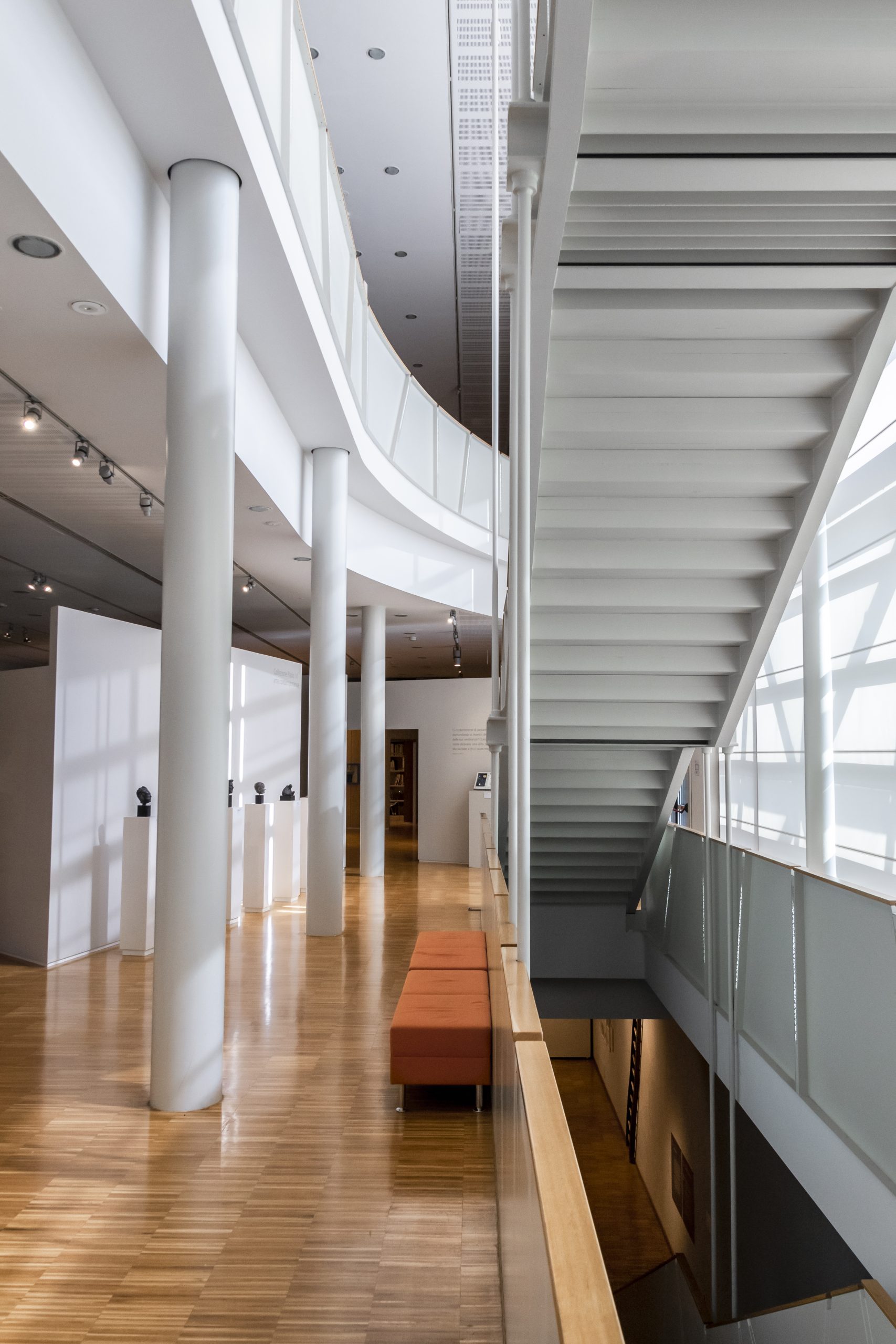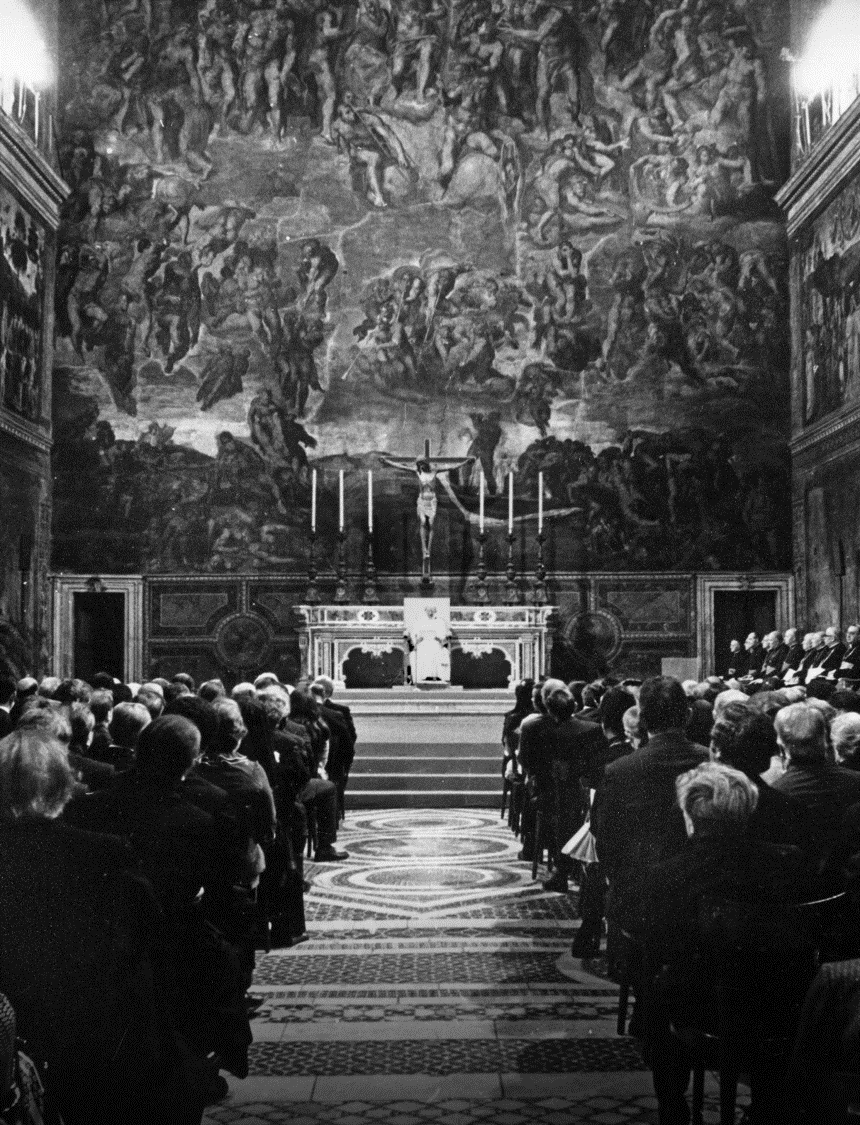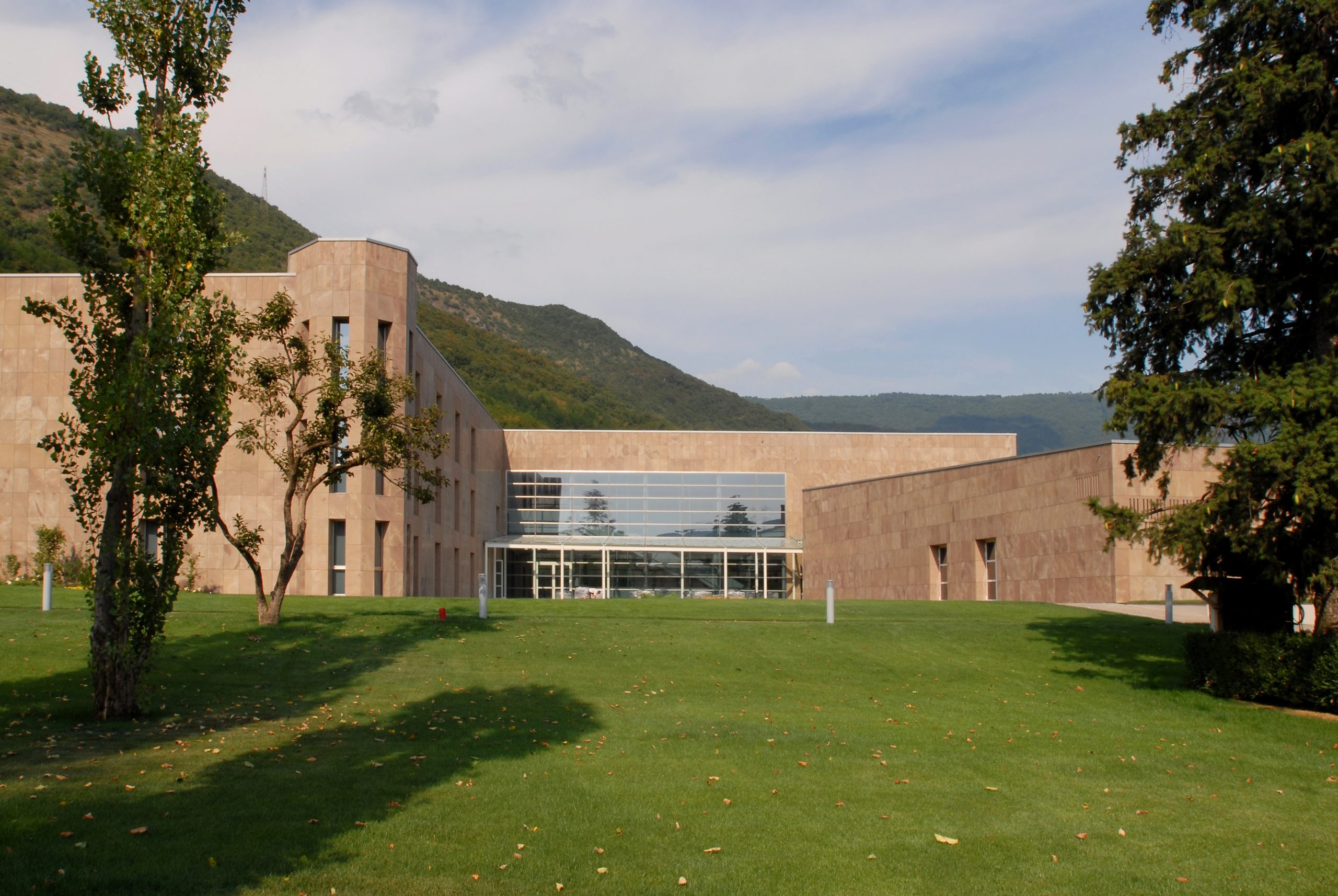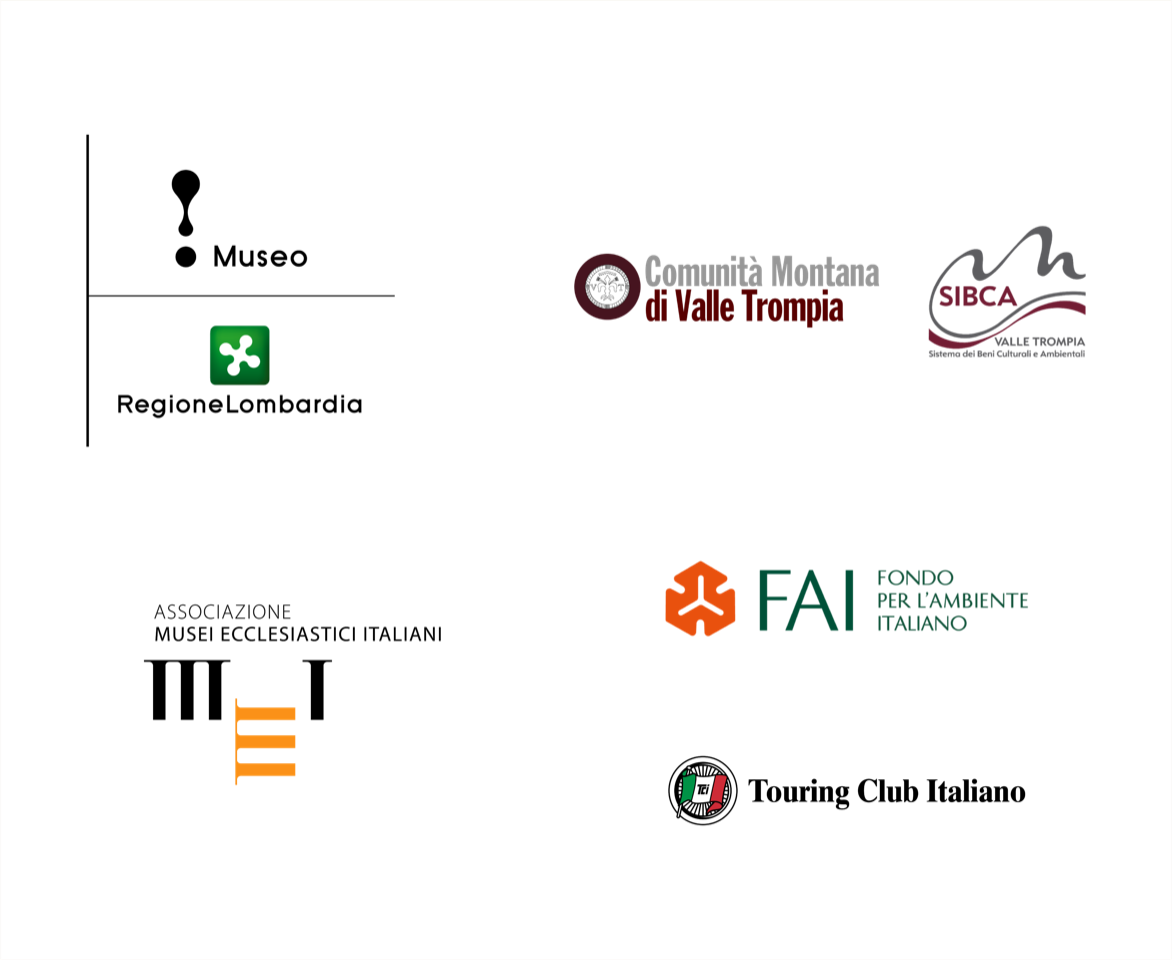Paul VI Collection
A Museum of Contemporary Art
The Paul VI Collection – Contemporary Art takes its name from Giovanni Battista Montini (1897-1987), Pope Paul VI from 1963, and is located in Concesio, in the province of Brescia, where Montini was originally born.
Far from being a mere Memorial of Paul VI or a gallery of sacred arts, the Museum is a collection of works resulting from human, lively and cordial relations between the Pope and many artists of his time.
The Museum preserves and exhibits a collection of paintings, drawings, prints, medals and sculptures of the 20th century that can be traced back to Montini and his secretary Mons. Pasquale Macchi. Among the authors represented in the Collection there figure Matisse, Chagall, Picasso, Dalí, Magritte, Rouault, Severini, de Chirico, Morandi, Fontana, Manzù, Hartung, Guitton and many other protagonists on the national and international scene.
The Collection is arranged over two floors in a 1,000 m2 exhibition space. Beside the main itinerary, there are other specific sections on graphics and medals, a dedicated space for temporary exhibitions and a large didactic laboratory.


The Pope friend of artists
“…The theme is this: we need to re-establish the friendship between the Church and the artists….”
In his speech to artists at the Sistine Chapel on May 7th 1964, Pope Paul VI marked the beginning of a turning point in the relationship between the Church and the world of art. Thanks to his open vision inspired by modernity, Pope Paul VI affirmed that art could no longer be conceived, by the Church, as a self-referential means, solely measured and limited within the canons of tradition. On the contrary, art should be intended as the free expression of the sensibility of the artist, a privileged path into the questions of the modern man and the search for the transcendent.
In this approach and rediscovery of the Truth, the artist is simultaneously creator and mediator in relation to God, able to convert the invisible into accessible and intelligible formulas.
The constant reference to beauty as the “splendour of the Truth” in Montini’s writings is therefore not to be intended as an end in its own sake, an abstract concept and a pursuit of a formal perfection, but as a participation of the sensible world in divine creation. An act that, beyond personal choices in style and technique, bears witness to a search in the realm of Truth.
The museum complex and the Birth House
Art and spirituality in Montini’s places
The exhibition space, inaugurated in 2009 by Pope Benedict XVI and made accessible in 2010, is part of a larger monumental complex which includes three buildings: northernmost Istituto Paolo VI, an international centre of studies on the figure of Montini; the central building hosts the Museum; and the southernmost curvilinear building operates as an auditorium which can hold up to 250 guests.
These buildings lie in the area of pertinence of the Montinis’ birthplace with the aim of ideally connecting the spaces of youth of the Holy Father with the new spaces which preserve the tangible and intangible heritage of his apostolate.


An interconnected museum
In 2014 the Paul VI Collection was acknowledged as a Museum by the region of Lombardy, and in 2021 it became part of the Sistema Museale ed Ecomuseale di Valle Trompia; since 2015 the Museum has also been a member of AMEI- Associazione Musei Ecclesiastici Italiani.
The Museum is also affiliated with FAI- Fondo Ambiente Italiano and TCI-Touring Club Italiano.
Since 2017 the Museum has been included in the project La scuola esce, la cultura cresce, in collaboration with AmbienteParco, Fondazione Brescia Musei, Museo di Scienze Naturali, Musil – Museo del Ferro, Teatro Telaio, Fondazione PInAC and Casa-Museo Zani.
The Museum is also part of MAC network – Museo Accessibile e Creatività with Fondazione PInAC, Fondazione Brescia Musei, Museo Diocesano di Brescia, MAVS – Museo Archeologico della Valle Sabbia and Fondazione Musil.
In addition, the Paul VI Collection works closely with local institutional, cultural and associative bodies, implementing joint projects for the benefit of all audiences.